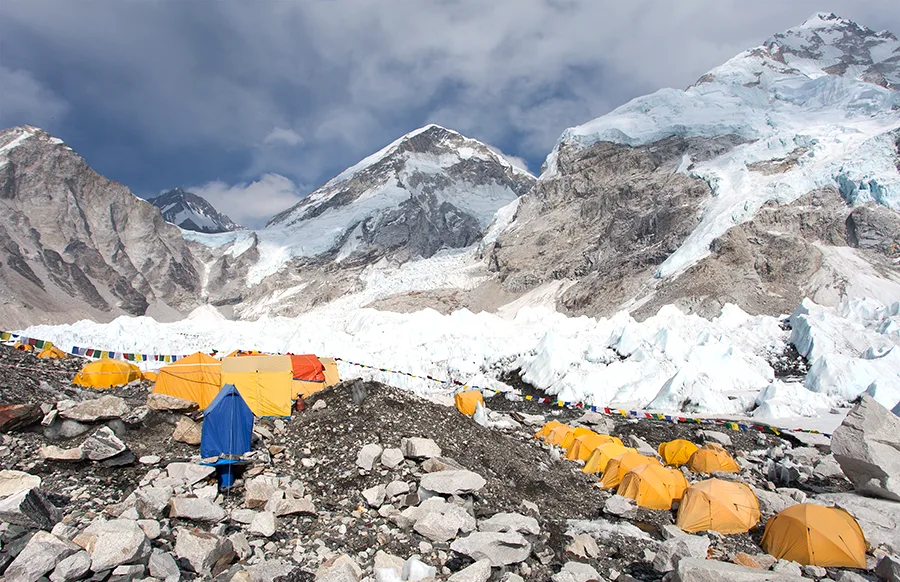Mid-winter trekking in Nepal, a complete guide
Mid-winter trekking in Nepal is like getting into a magical snow paradise. Surrounded by high mountains and delightful valleys, Nepal is a luxurious trekking destination, especially in the cold Himalayas. The air is cool and the sky is very clear, making the complete journey even more special.
The trail becomes a silent winter wonderland, covered in snow, with panoramic views of the majestic mountains. Winter is referred to as an off-season, which means you can see fewer people on the trails. Mid-winter trekking in Nepal allows adventurers to discover nature quietly and in complete immersion.
Mid-winter trekking in Nepal isn’t just about lovely scenery; it also offers exciting challenges. When the climate is very calm, the paths are covered with snow, making the journey even more enjoyable. Winter Trekking in Nepal isn’t simply a fun adventure – it’s also a way to revel in mountain subculture in snowy and comfortable surroundings.
Whether you’re hiking famous destinations just as the Annapurna Circuit or Everest Base Camp, or discovering remote trails, mid-winter trekking in Nepal offers a special journey where every step tells a brand new story about the Himalayas.
Top 10 Mid-Winter Trekking in Nepal: Discover Nepal’s Majestic Beauty
Nepal is popular for its charming snow-capped mountains and it’s far no longer limited to majestic mountains. It is an excellent destination for individuals who revel in hiking in the winter. Nepal has panoramic scenery of snow-capped mountains, serene valleys, and old-culture-rich villages protected in white snow.
Among the numerous alternatives available to travelers, a few mid-winter treks stand out because of the exceptional alternatives for mid-winter trekking in Nepal. These tours promise travelers an unforgettable experience in surroundings with cold mountain air and awe-inspiring perspectives.
One of the most inspiring mid-winter treks in Nepal is the Annapurna base camp trek. This trek takes you through beautiful rhododendron forests and small Gurung villages to the center of the Annapurna variety. Along the way, you’ll find a unique aggregate of cultural lifestyle and snowy terrain.
Another mid-winter trekking in Nepal is the Langtang Valley trek. A bit shorter than some of the other treks but it’s very lovely. Close to the Tibetan border, it gives panoramic views of snow-capped mountains, sacred lakes, and the welcoming Tamang human beings.
Let’s delve into our main concern: top 10 mid-winter trekking in Nepal.
1. Everest Panorama Trek:

The Everest Panorama Trek is an exciting trek that offers you the stunning surroundings of the arena alongside hiking a whole of challenges. The Everest Base Camp is located within the Khumbu vicinity of Nepal and is perfect for individuals who want to enjoy the Himalayas.
The Mid-winter trekking in Nepal starts with a scenic flight from Kathmandu to Lukla, surrounded by lovely Sherpa villages and lush rhododendron forests. The pleasant thing is the view of Mount Everest from Tengboche. Majestic mountains like Everest, Lhotse, Nuptze, and Ama Dablam form a panoramic scenery and deliver tourists an experience of pleasure and awe.
As you climb to the top, you will enjoy the views of antique monasteries chat with the friendly locals, and revel in the Sherpa lifestyle. The Everest Panorama trek isn’t too difficult, however, you can enjoy the astounding scenes of the Himalayas and revel in the nearby lifestyles.
This is a must-go alternative for humans with normal physiques. This Mid-winter trekking in Nepal captures the beauty of Everest and the nearby mountains and offers trekking in the heart of the Khumbu region.
2. Everest Base Camp Trek:

Get started for a thrilling adventure on the Everest base camp trek. From Lukla, you could see high-ranging mountains all around. Along the way, there are lush forests, beautiful Sherpa villages, and colorful bridges with flags.
You will visit well-known places like Namche Bazaar inside the Khumbu Valley and Tengboche Monastery surrounded by mountains. Reaching Everest Base Camp is a huge accomplishment. The Khumbu Glacier may be visible from the Everest Base Camp.
This Mid-winter trekking in Nepal is however more suitable for new beginners or skilled trekkers. You can feel the kindness of the Sherpas, and explore the vibrant Buddhist lifestyle of the monasteries. You may even experience the power of Kalapatta, which offers scenic views of Everest and nearby mountains there.
3. Annapurna Circuit Trek:

The Annapurna Circuit trek is famous for its various environments, from lush tropical forests to high-terrain landscapes. This Annapurna Circuit trek offers panoramic views of Annapurna Dhaulagiri and Fishtail Peak.
While deciding on mid-winter trekking in Nepal, the Annapurna area offers clear skies and cool mountain air, supplying panoramic views of the snow-capped peaks. This Mid-winter trekking in Nepal passes through old Nepalese villages, and it permits them to immerse themselves in culture and engage with the community.
Along the way, you’ll also encounter frozen waterfalls and icy rivers, developing spectacular views. The most challenging aspect of hiking on the Annapurna Circuit in mid-winter is passing through probably risky regions, along with high mountain passes like Thorong La (5,416m).
4. Langtang Valley Trek:
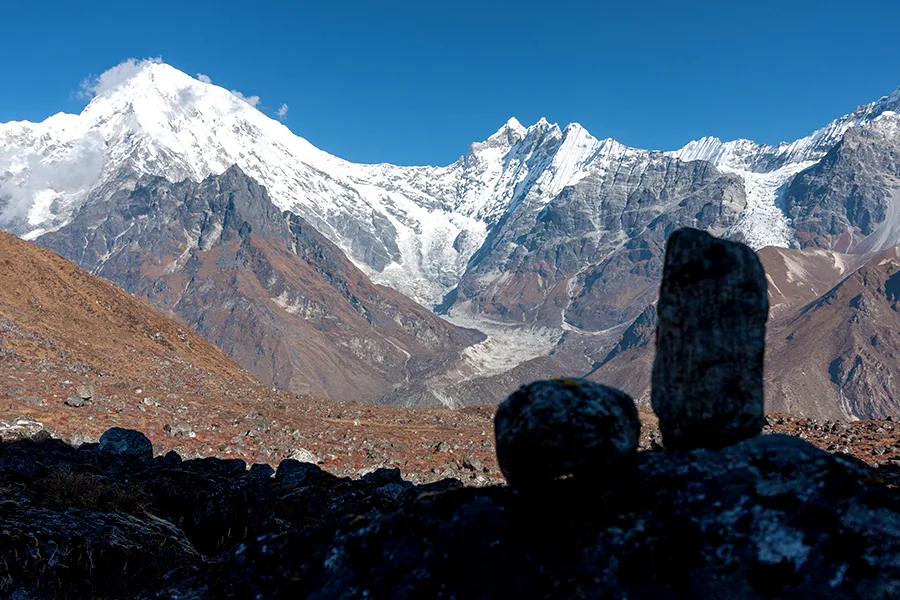
Hiking in the Langtang Valley, a lovely place in the Langtang City of Nepal is a high-quality journey. It has an outstanding blend of nature, pleasant surroundings, and a fascinating subculture. The Mid-winter trekking in Nepal starts from Syabrubesi and passes through dense forests, beautiful villages, and the Langtang River.
The amazing part is seeing the remarkable Langtang Valley surrounded by high peaks like Langtang Lirung, Dorje Lakpa, and Ganesh Himal. There are a few Tamang Sherpa villages within the valley wherein you could enjoy their tradition, and go to old monasteries.
As you climb up, you’ll see open meadows, yak grazing regions, and peaceful Kyanjin Gompa. You can see the Langtang Glacier and enjoy the lovely views from Tserko Ri. The hiking is not too difficult, so it is ideal for hikers who need to revel in silent trails.
Aside from the natural splendor, what makes the Langtang Valley trek famous is meeting the local community, exploring their way of life, and seeing how the road has been rebuilt after the 2015 earthquake. This trip offers a splendid opportunity to find out about the Himalayas and make contributions to the Langtang location.
5. Mardi Himal Trek:

Mardi Himal Trek is another interesting short trek that promises cool cultural studies. You will pass through stepped fields, coniferous forests, and quaint villages inhabited by Gurungs.
The awe-inspiring part of this Mid-winter trekking in Nepal is watching the dawn from the Mardi Himal Camp. From there, you can experience thrilling views of the Annapurna and Dhaulagiri mountain ranges. It’s truly beautiful in the morning whilst the sun hits them.
Even though Mardi Himal is close to the well-known Annapurna base camp trial, things are extraordinary right here. In winter, you can enjoy the views of the snow peaks of mountains like Annapurna, Machchapuchhre, and Dhaulagiri.
Most of the route remains above 4,000 meters, so the climate is generally dry and cool, which is challenging. The highest point you’ll reach is Mardi Himal Base Camp at an altitude of 4500 meters above sea level.
6. Ghorepani Poon Hill Trek:
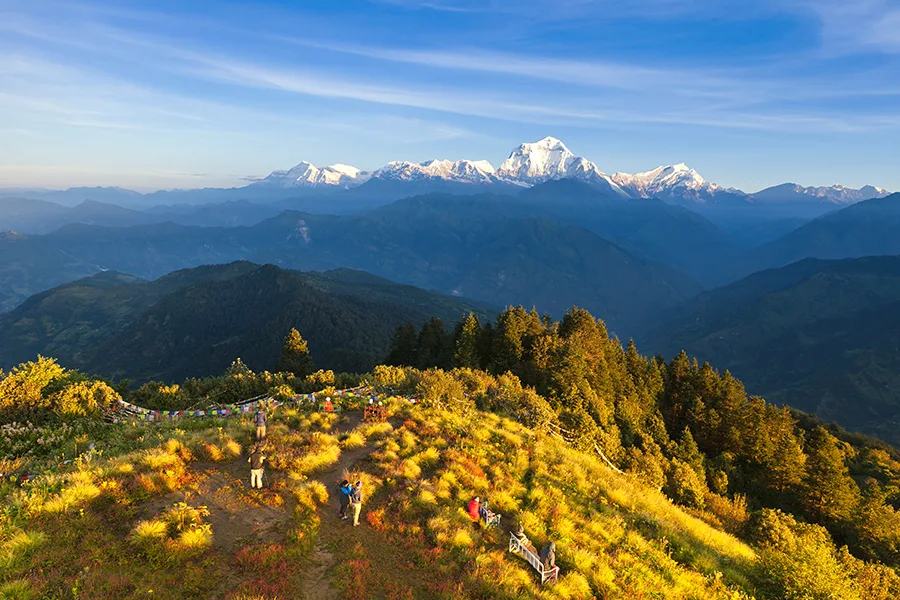
Going for mid-winter trekking in Nepal opens the door to an exceptional and serene journey, offering snowy landscapes, cultural exploration, and value-effective options. Below, explore a number of the famous mid-winter treks in Nepal, every with its specialty and reasons why they may be especially ideal during the mid-winter months.
The Ghorepani Poon Hill Trek stands proud as one of the maximum famous mid-winter treks in Nepal, imparting a reachable and fun journey appropriate for all ages and viable all through the year. This Mid-winter trekking in Nepal takes you to Poon Hill, a hill at an elevation of 3,210 meters within the Annapurna region.
In the winter days, the sunrise from Poon Hill is, in particular, charming, with the snow-capped peaks radiating a golden glow in the early morning. The path, generally adorned with lush greenery, transforms right into a tranquil snow-covered wooded area throughout winter weather, presenting serene trekking enjoyment.
7. Upper Mustang Trek:

The Upper Mustang Trek takes you to the less-explored and culturally rich region of Mustang, regularly referred to as the “Forbidden Kingdom.” This Mid-winter trekking in Nepal gives a unique mixture of Tibetan lifestyles, historic monasteries, and rugged terrain landscapes.
Upper Mustang offers clear skies and slight daylight hours temperatures, making it an excellent time to explore this arid place. The trek takes you through ancient villages, which include Lo Manthang, wherein you can enjoy the traditional Tibetan manner of life.
The winter landscapes, with snowy mountains contrasting with barren valleys, create a surreal and captivating environment. Upper Mustang can experience a cold climate and occasional snowfall in mid-winter. The trekking path entails crossing high mountain passes and navigating through rugged terrain, which may be difficult in cold situations.
8. Manaslu Circuit Trek:
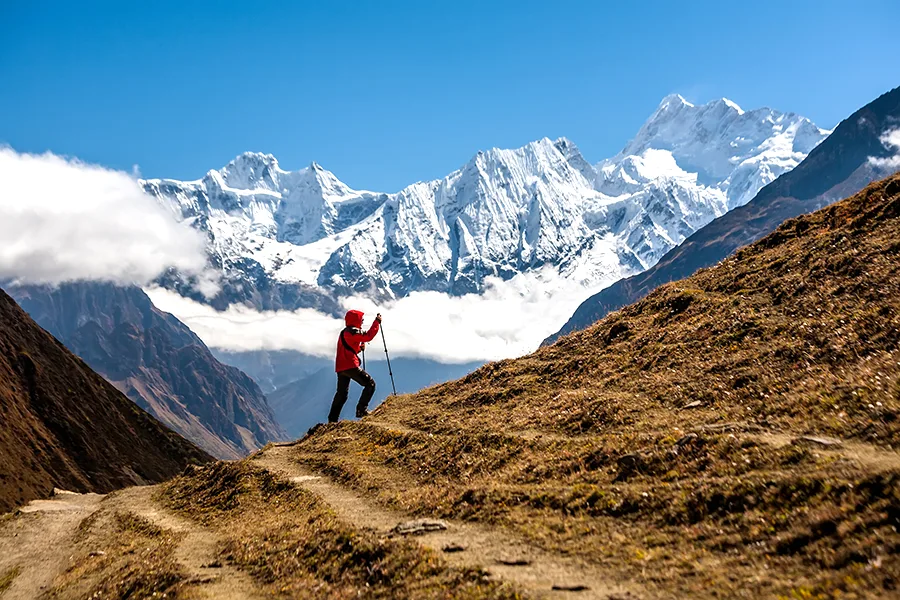
The Manaslu Circuit Trek gives a less-crowded trekking trial to the Annapurna and Everest areas. This Mid-winter trekking in Nepal takes you across the majestic Manaslu Circuit vicinity, presenting beautiful views of snow-capped peaks, alpine valleys, and Tibetan-advocated villages.
During mid-winter, the Manaslu region offers clear skies and pristine landscapes, with fewer trekkers on the route. The Mid-winter trekking in Nepal passes through traditional villages inhabited by Gurung and Tibetan communities, deliberating cultural immersion and interactions with locals.
The winter surroundings, with snow-protected forests and frozen waterfalls, add to the trek’s beauty and allure. The challenging factor of trekking in the Manaslu Circuit is the ability for chill weather, mainly at higher elevations. Severe cold-climate equipment and acclimatization are essential to ensure a steady and interesting trek.
Additionally, some teahouses alongside the trial can be closed due to the cold season, requiring careful plans for lodging and provisions.
9. Kanchenjunga Base Camp Trek:
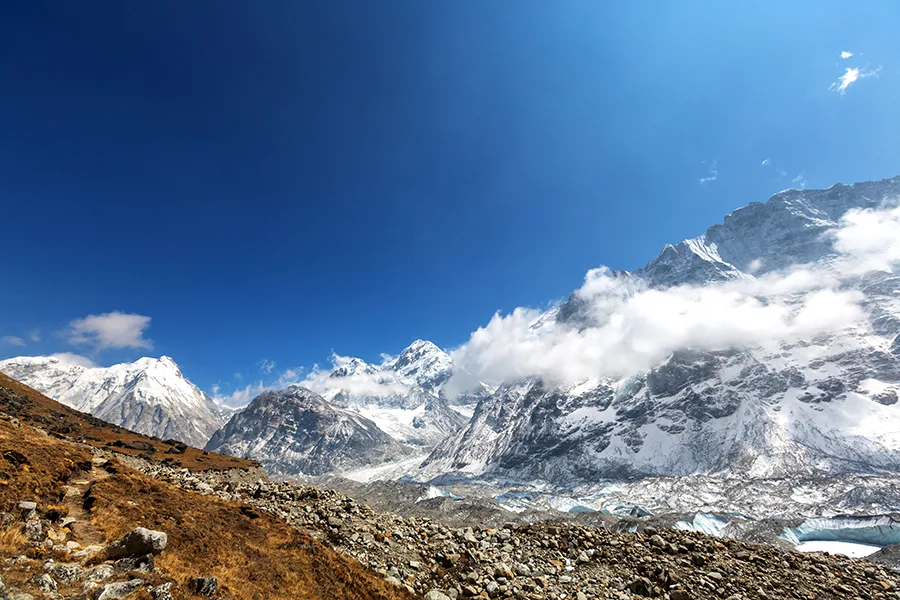
Kanchenjunga Base Camp Trek is a less-explored and hard hiking trail to the base of the arena’s third biggest mountain, Mount Kanchenjunga (8,586m). The trek gives pristine deserts, sufficient biodiversity, and cultural encounters with indigenous peoples including the Limbu Rai.
You will enjoy passing through dense forests, alpine meadows, and old villages with clean skies and stunning views of snow-capped peaks and alpine landscapes in Kanchenjunga. In the middle of winter, this trail offers an opportunity for natural world viewing and cultural immersion in the winter beauty of snowy trees and frozen rivers.
The major task challenge of hiking to Kanchenjunga Base Camp in the winter is the extraordinarily cold weather, particularly at excessively high altitudes, and the opportunity of heavy snowstorms. Proper winter gear and altitude precautions are essential.
In addition, transportation is far away and much less developed in comparison to different regions, so careful planning and guidance are required.
10. Dolpo Trek:
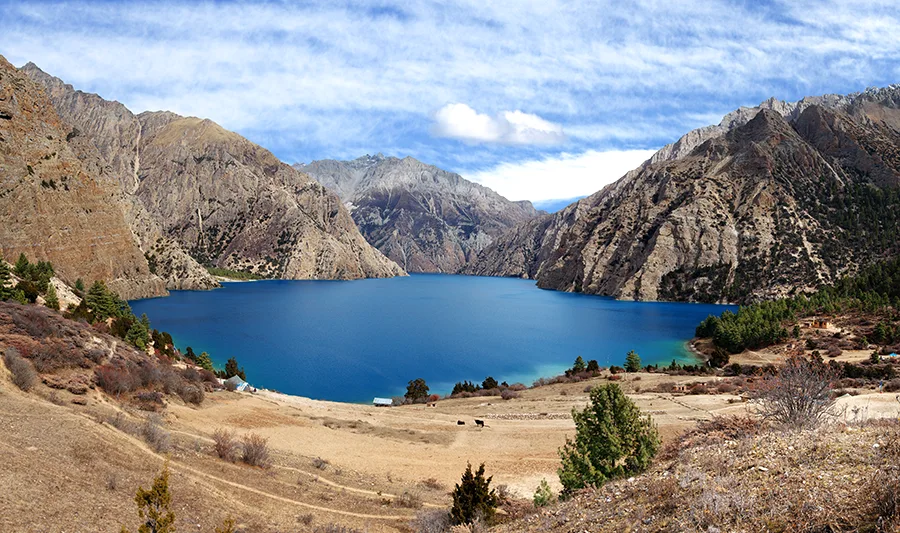
The Dolpo Trek is a culturally rich trekking path in western Nepal, known for its rugged landscapes, ancient Bon Buddhist monasteries, and traditional Tibetan culture. This Mid-winter trekking in Nepal contains the Shey Phoksundo National Park, and the innermost lake in Nepal, Phoksundo Lake.
During mid-winter weather, the Dolpo region offers clear skies and beautiful views of the snow-capped peaks, along with Dhaulagiri and Kanjiroba. The trek passes through old villages, remote settlements, and pristine barren regions, offering opportunities for cultural encounters and natural world scenes.
The winter weather terrain, with frozen lakes and snow-covered valleys, creates a surreal and fascinating environment. The prime challenge of hiking in Dolpo is the extreme cold weather and the ability for heavy blizzards, specifically in high-altitude areas.
Proper cold-weather tools and acclimatization are critical to ensure a safe and fun trek. Additionally, the trek is much less advanced, so facilities and hotels may be not easily accessible, requiring careful planning and self-cautious.
Top Advantages and Disadvantages of Mid-winter Trekking in Nepal
Mid-winter Trekking in Nepal, which generally falls between December and February, offers both advantages and disadvantages. Here are some of them:
Top 10 Advantages of Mid-winter trekking in Nepal
1. Less crowded roads:
Fewer visitors prefer to go trekking in the middle of winter than in the spring and monsoon seasons. This means more privacy on the trails and you can enjoy the pure beauty of Nepal without the crowds. You can explore many famous spots, enhancing the peace and connection with nature.
2. Clear skies and awesome scenery:
Nepal generally has clear skies and excellent visibility during the winter months. This means eye-catching views of the snow-capped Himalayas and surrounding areas. Chill, clean air offers great visibility, allowing for stunning photographs and unforgettable memories.
3. Off-season discounts:
Since mid-winter is considered an off-season for traveling in Nepal, one usually gets a discount on prices of accommodation, permits, and other travel-related expenses. This can provide road trips that have become more affordable for budget-minded travelers or have spent more-end accommodations or experiences.
4. Unique Winter Landscape:
Traveling to Nepal in the middle of the winter season gives you a unique view of the panorama. You will come to see frozen waterfalls, icy rivers, and snow-included roads, creating a lovely winter wonderland atmosphere. The panorama turns into a pristine blanket of white, developing a unique and unforgettable journey revel in.
5. Cultural dive:
Despite being off-season, many neighborhood tea houses and motels are still open all through the mid-winter journey. This provides an opportunity to interact with the community along the paths. Learn about their lifestyle, traditions, and culture without the hustle and bustle of tourists.
6. Unique natural world encounters:
In the middle of winter, some flora and fauna species in Nepal can be very energetic or visible, particularly in the decreased elevations in which there is little snow. Trails can offer opportunities to see animals including musk deer, Himalayan antelope, and numerous birds.
7. Benefits of Photography:
Clear skies in mid-winter and pristine snow offer superb scenery for image enthusiasts. With so few travelers around, there will be lots of opportunities to capture breathtaking views of the Himalayas, frozen landscapes, and nearby subcultures without interruption or crowd backgrounds.
8. Thrilling Experiences on the Adventure:
A mid-winter hike provides an extra level of pleasure and mission to your journey. The trek accommodates snowy trails, icy rivers, and cold winds which give interesting challenges that check your abilities and stamina, and go away with a sense of accomplishment.
9. Personalized Experience:
With fewer trekkers on the trails, you will have the opportunity to have a more personalized experience. Local guides and trekkers may have enough time to accommodate your needs and preferences, offering personalized itineraries, special meals, and depth knowledge of the area, for your overall travel adventure.
10. Minimal Environmental Impact:
Out-of-season tour means reducing your environmental impact on the fragile Himalayan ecosystem. There are fewer human beings on the trails, and less stress on natural assets and flora and fauna habitat, resulting in more sustainable tour practices. By trekking in the middle of winter weather, you’re assisting to preserve the pristine lands of Nepal for upcoming generations to experience.
Top 10 Disadvantages of Mid-Winter Trekking in Nepal
1. Severe Cold:
Mid-winter trekking in Nepal offers very cold temperatures, in particular at high altitudes. Below-zero temperatures offer great challenges, together with the hazard of frostbite and hypothermia if proper precautions are not taken. It is important to be organized for intense situations.
2. Fewer tea rooms and facilities:
While some tea rooms are open in the middle of winter, many may close due to low traffic. This can limit your accommodation options and amenities such as food, water, and shelter on hiking trails. You may need to carry extra luggage or plan your travel carefully to ensure you have the right assistance.
3. Short daylight hours:
Winter days are short in Nepal and there are few daylight hours for trekking. This means less time to explore your surroundings daily. Accordingly, it is important to plan your walking route considering limited hours of daylight and possible weather challenges.
4. Hail and landslide risk:
During the winter months, the risk of hail and landslides may increase in some parts of Nepal, especially in areas where heavy snowfall or unstable terrain occurs.
5. High-altitude areas to hike:
Some of the highest mountains in Nepal can be inaccessible or extremely difficult to cross in the middle of winter due to heavy snow and ice This can restrict your hiking limit and prevent access to certain trails or sights. It is important to check trail conditions and consult with local guides before you head on at this time.
6. Increased risk of altitude sickness:
Colder temperatures and decreased oxygen levels all through the winter months can exacerbate altitude sickness. Walking at high altitudes without the right posture and precautions can motive signs and symptoms which include headache, nausea, and dizziness, which could hamper your fitness.
7. Make travel difficult:
Snow and ice can obstruct road signs and make travel difficult, especially in remote areas or less traveled areas. Footpaths are not more defined, making them more accessible to getting lost or taking a long time to destination. It is important to have the right travel skills and tools, such as maps, compasses, and GPS devices, to travel safely in winter conditions
8. Limited traffic:
During winter weather, bad weather can disrupt flights to and from hiking destinations in Nepal, flights to remote airports can be canceled or delayed, and roads main to cities can also end up difficult to travel due to snow or landslides. This can affect your travel plans and require adjustments in planning and organizing event planning.
9. Increased weight of gear:
You will need extra gear to withstand mid-winter trekking in Nepal and potential hazards from cold winds, such as fresh layers of clothing, insulated sleeping bags, and mechanical traction for the edge of the ice sheet.
10. Critical Response Time:
During an emergency or medical situation d, response time may be lengthy due to reduced access and logistics challenges. Bad weather may prevent medical facilities in remote areas from having limited resources for emergency care. It is important to have a comprehensive emergency plan and if necessary they must provide basic first aid themselves.
Overall, mid-winter trekking in Nepal offers unique experiences and stunning landscapes but the challenges posed by cold weather and limited resources require careful planning and preparation.
The Final Wrap Up
Mid-winter treks in Nepal are amazing! The snowy land makes everything look like a magical winter wonderland. Not crowded, so you can enjoy the beauty in peace. Just be sure to dress up in warm clothes, and you will have a wonderful trip with amazing views!
Not as busy as other times of the entire year, you could experience the beauty of nature in peace and relaxation. Don’t forget to pack warm garments, you’ll have an amazing trip with beauty attractions along the way to leave you with lasting reminiscences.
So, if you are prepared for mid-winter trekking in Nepal however adventurous journey, a mid-winter trek is well worth it!




